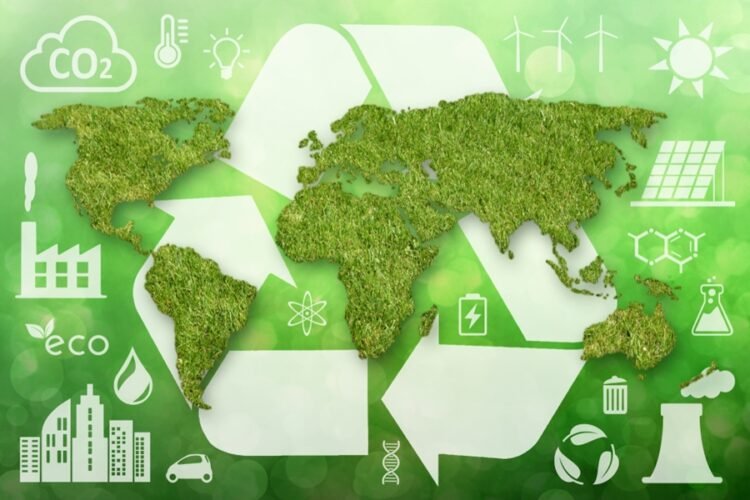
What is Sustainable Technology?
Sustainable technology refers to the use of technological innovations and practices that minimize environmental impact, conserve resources, and promote long-term ecological balance and human well-being.
The intersection of IT and sustainability is fast becoming a critical focus area for organizations seeking to minimize environmental impact while maximizing operational efficiency. The role of IT in sustainable technology extends beyond mere hardware and software management; it encompasses a holistic approach to green computing and the adoption of eco-friendly practices throughout the IT lifecycle.
Embracing Green Computing Principles
Green computing, also known as sustainable or eco-friendly computing, emphasizes the reduction of energy consumption, carbon emissions, and electronic waste associated with IT infrastructure and operations. From data centers to end-user devices, organizations can implement various strategies to minimize environmental footprint and promote sustainable IT practices. IT professionals can engage in deploying energy-efficient hardware components, adhering to industry standards for energy consumption and environmental sustainability.
Optimizing Energy Efficiency
The role of IT in sustainable technology extends to optimizing energy efficiency across infrastructure and operations. This encompasses deploying energy-efficient hardware, virtualization, and consolidation techniques to optimize resource utilization. Through power management solutions and energy-saving policies, IT minimizes electricity consumption and operational costs while maximizing efficiency.
Promoting Resource Conservation
In sustainable Technology, IT promotes responsible resource usage and conservation throughout the IT lifecycle. This involves adopting eco-friendly procurement policies, implementing recycling and e-waste management programs, and extending the lifespan of IT assets through refurbishment and reuse. By prioritizing resource conservation, IT minimizes environmental pollution and conserves valuable resources.
Leveraging Cloud Computing and Virtualization
Cloud computing and virtualization technologies play a pivotal role in advancing sustainable IT practices by enabling resource consolidation, scalability, and dynamic resource allocation. By migrating workloads to cloud-based infrastructure and embracing virtualization techniques, organizations can optimize resource utilization, reduce hardware footprint, and lower energy consumption.
Furthermore, cloud service providers often operate energy-efficient data centers powered by renewable energy sources, further reducing the carbon footprint of IT operations. By leveraging cloud-based services and infrastructure-as-a-service (IaaS) solutions, organizations can minimize capital expenditures, improve operational efficiency, and support sustainable growth initiatives.
Implementing Green Data Center Design
The design and construction of data centers represent a significant opportunity to integrate green computing principles and sustainable design practices. Green data center design focuses on minimizing environmental impact through efficient cooling systems, renewable energy integration, and innovative architectural solutions.
From modular data center designs to free cooling technologies and air-side economization, organizations can implement various strategies to enhance energy efficiency and reduce carbon emissions associated with data center operations. By adopting sustainable construction materials and incorporating renewable energy sources, organizations can establish data centers that operate with minimal environmental impact while supporting high-performance computing requirements.
Promoting Environmental Stewardship
Beyond technical considerations, the role of IT in sustainable technology encompasses a broader commitment to environmental stewardship and corporate social responsibility. Organizations can engage stakeholders, employees, and industry partners to raise awareness about the importance of sustainable IT practices and foster a culture of environmental responsibility.
By participating in industry initiatives, such as the Green Grid and the Electronic Product Environmental Assessment Tool (EPEAT), organizations can benchmark performance, track progress, and demonstrate commitment to environmental sustainability. Furthermore, organizations can collaborate with suppliers and vendors to promote sustainable supply chain practices and integrate environmental criteria into procurement processes.
Conclusion: The Path to Sustainable Technology
The role of IT in sustainable technology is indispensable in addressing global environmental challenges and promoting responsible stewardship of natural resources. By embracing green computing principles, optimizing energy efficiency, leveraging cloud computing and virtualization, and promoting environmental stewardship, organizations can minimize environmental impact while maximizing operational efficiency and driving innovation.
As technology continues to evolve, the imperative for sustainable IT practices will only grow stronger. By integrating environmental considerations into IT strategy and decision-making processes, organizations can position themselves as leaders in sustainable technology and contribute to a more sustainable future for generations to come.
